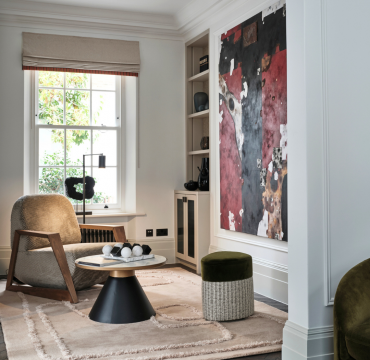DegreeArt.com at THE EMPIRE GALLERY is pleased to present EYE BLOOD YOU, a 2009 solo show of the artist GREGORY SMART which features paintings and a selection of etchings.
'A heady experience' - Where London Magazine
'Unmissable' - Angel & North Magazine
'Colourful, whimsical and heavily populated with imagination' - Time Out, First Thursdays
'Unmissable' - Angel & North Magazine
'Colourful, whimsical and heavily populated with imagination' - Time Out, First Thursdays
SMART is the great grandson of circus showman BILLY SMART, his mother a trapeze artist and his father a tightrope walker. In contrast to the circus, he studied at Bryanston School – whose alumni include, LUCIAN FREUD and HOWARD HODGKIN, followed by Norwich then Farnham School of Art and recently graduating with an MA from The Princes Drawing School.
In the etching The Tired Eye, lines have been laboriously dry pointed into steel plates to make gridded grounds, over which muscular, writhing forms emerge and float, observed by a single, lidless eye suspended from above. We are in the imaginative space, nothing is solid, all is viscera and light in a world without walls or floors. In such etchings the painterly and the graphic co-exist, hence a reference to Pollock and Bosch, the title of a watercolour elsewhere in the exhibition, which depicts a comically twisted artist figure holding an oversized paintbrush. Smart grew up within his families’ circus and fairground, and the repeated motif of the grid in the etchings whilst referencing modernism is also the artist’s personal allusion to the configuration and design of the boardwalks and metal work plates that made up the fairground rides and circus props he recalls from his youth.
In a number of the etchings, the strong colour is restricted to a neural red, grey and blue recalling modern medical illustrations and a favoured caput mortem which lends its name as the title to a suite of three etchings that flank the etched steel plates themselves, exhibited in their own right and described as shields.
Like an early arcade game, irregular spots vibrate and allide with swhooshing parallel lines in Bong. Scarred and rotting grounds with more swooshes, printed in yellows and brown in Greasy Mishap, put one in mind of the banana skin and the inevitable incident it invites, an idea carried through into Slip Inside This House, a psychedelically hued work befitting the song title that provides the name, of paint pot rings, splashes and slipped footprints, a sideways allusion to the activities of the painter in their studio. More tragicomedy is on offer in Man Pursued by Fires, which depicts a clown like figure scrabbling up a tree in an attempt to escape the flames that chase him, printed in a velvety black on yellow ground, these two colours together signify comedy and tragedy to Smart in his own personal mythology, which one gets a look into in the more descriptively figurative etchings which include Happiness Is Easy; a romp of a dry point in which a couple joyfully copulate in four separate panels, set in a loosely described sunny outdoors somewhere.
The watercolours make unusually full use of the medium, floods of bleeding colour form recognisable figures as in the oriental like Yellow Fever, to the brightly hued works that depict listing mannequin like male/female couples, or the dog like creature sitting at the edge of an urban sprawl waving its phallus/paintbrush provocatively against a bright blue sky. A calligraphic brush mark slashes a contour, mouth or eye here and there, energising the image with an all over animation. This is an expressionists language that favours suggestion over description, the viewer is left to join the dots and this is also evident in the three large oil paintings that hint at narratives, all be it teasingly opaque ones.
In his paintings Smart’s engagement with paintings history, from the Greek vase painters to BOSCH and GOYA in the figurative tradition through to the gestural abstraction of GUSTON and POLLOCK is evident, but so too is a cooler contemporary sensibility, influenced by commercial graphics and manga cartooning. In Say Yes To Another Excess, a blue male figure reclines lasciviously or sprawls collapsed? Is he a God, fallen aerial artiste, or painter even? Is his condition ecstasy or agony, as he reaches for something or someone beyond the confines of the rectangle? The excessive romanticism of Self As Success is graphically counterbalanced in this by the hard and jarring use of the of white ground suggesting the void and the uncertainty of a world in flux, made up of acts, sliding screens and experienced on a floating stage.









